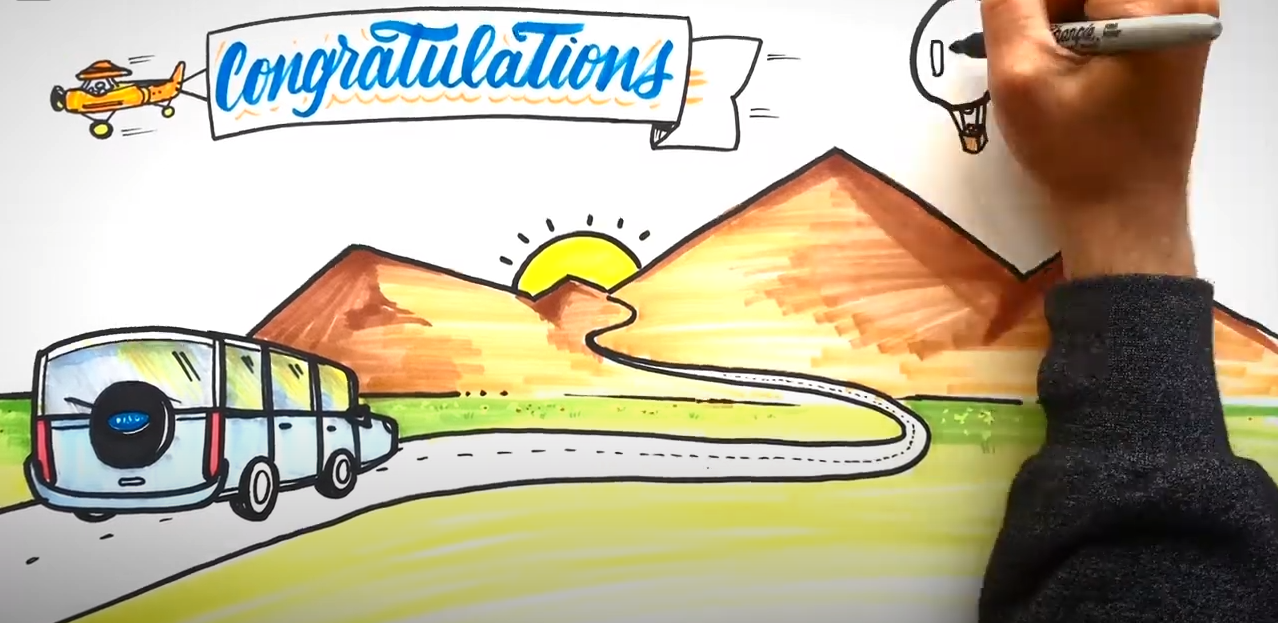
How to Drive Sales with Video Ads in 2020
Video is one of the most powerful marketing tools. With videos gaining huge momentum in the advertising world, staying competitive without them is nearly impossible.
Video ads can become the most important part of your marketing and sales strategy by generating thousands of leads and boosting conversion rates. Entertaining and educational videos can improve all aspects of your digital marketing campaign, including SEO, paid search ads, SMM (social media marketing), OTT (over-the-top) advertising, and more.
A Few Important Stats
To get a better idea of the importance of using video ads in your 2020 marketing campaign, consider these latest stats.
- 78% of marketers plan to increase their video ad spend in the next 12 months (IAB)
- 52% of marketers say that videos provide the best ROI (HubSpot)
- Social media posts with videos get 48% more views (SmallBizTrends)
- Video marketers get 66% more qualified leads per year (Optinmonster)
- Video ads are the top way consumers discovered a brand they later made a purchase from (Animoto)
- One in four U.S. Internet users watch online videos daily (Statista)
Customers enjoy videos for their entertainment factor and the ability to share information quickly. More than 50% of consumers want brands to utilize more videos in their marketing and educational campaigns.
Video Ads vs Image Ads
Even though videos are highly popular among consumers of all ages, some companies stick to images in their advertising campaigns. The main reason is the erroneous belief that video advertising is expensive and time-consuming.
In reality, videos have a much bigger attention-hooking potential while contributing to a higher marketing ROI.
- Videos can convey a clearer message — you have more time and space to promote your brand with a video than with an image.
- Videos get more engagement — they generate formidable engagement across all social media platforms:
Tweets with videos get 10 times more engagement than tweets without them.
LinkedIn users are 20 times more likely to share a video than images and texts.
Pinterest users are 2.6 times more likely to buy after seeing a brand video.
On Instagram, videos generate more engagement than any other content type.
- Videos help with brand awareness — by getting more time and space to talk about your brand, you are likelier to generate brand awareness, loyalty, and affinity. More than 60% of consumers make a purchase after watching branded visual content.
While video ads tend to drive more sales than image ads, it doesn’t mean these two mediums can’t coexist.
Video Ads vs Text Ads
According to Insivia, viewers retain 95% of a video message compared to 10% of a text message. While text content is crucial to SEO efforts, video ads are much better at catching the audience’s attention, improving your SEO tactics in the process.
Videos are also more appealing to decision-makers. Almost 60% of executives say that when presented with video and text content, they choose video.
Videos have a higher sharing potential on social media. They generate 12 times more shares than text and images combined.
How to Apply Video Ads to Drive Sales
Two key platforms to consider for your video marketing efforts are YouTube and Facebook.
- More than 5 billion videos are watched on YouTube daily.
- More than 4 billion video views occur on Facebook every day.
To drive sales, companies take advantage of both platforms to post content, utilize paid search ads, and raise brand awareness.
1. Use a Multi-Channel Approach
Video content you produce can be utilized across multiple channels depending on your campaign’s goals, budget, and resources. Once you create a video, you can share it on:
- Website
- Social media
- OTT media
- YouTube
Each of these channels comes with a variety of video placement opportunities. By offering users a chance to share your videos across different channels, you are turning them into brand ambassadors.
2. Take Full Advantage of Paid YouTube Advertising
YouTube offers an excellent opportunity for video marketing.
- Display ads — appear on the right-hand side of the video and on top of the suggestion list.
- In-stream ads – appear in the beginning, end, and middle of the video your audience is watching. They can be skippable or unskippable.
- Bumpers — unskippable ads that appear while the video is running (can’t be over 6 seconds long).
- And many more
You can use these paid ads to advertise your products and services as well as video content from your YouTube channel.
For advertisers with a high marketing budget, YouTube offers Masthead ads. They generate a massive audience reach over a short period of time. These ads appear in the YouTube home feed across all devices.
3. Use Video Remarketing
Video remarketing allows you to reconnect with people, who’ve previously interacted with your video on YouTube. After the user finishes viewing the video and leaves the page, you can follow and place ads in front of them as they visit other websites.
Google Ads allows you to set up simple video remarketing campaigns after linking YouTube and Google Ads accounts.
4. A/b Test Your Ads
Video ads require a/b (split) testing just like image and text content does. Create several versions of your video ads and run all of them to see which one works best.
Things to a/b test in a video are:
- Thumbnails
- CTA
- Title
- Location
- Length
- Introduction
- Music
One small tweak in your video content could drive higher conversions and affect the bottom line of the entire marketing campaign.
Setting up Your Video Marketing Campaign Today
Video ads are an integral part of any successful marketing campaign. While creating video content may take longer than generating images, video marketing campaigns have a higher ROI.
At Geary, we’ve been helping companies across different industries drive sales using video ads for many years. Here are a few examples of how we do it:
- Promotional video for AR Iron. This video has been incredibly successful on Facebook, receiving over 200,000 engagements for less than a penny per engagement.
- Home page video for Capstone Capital. This video was made for Capstone Capital’s home page and has led to multiple emails from top investment firms, complimenting Capstone on the quality.
- Xibit Solutions promotional video. We created this video for a landing page on Xibit’s site. The addition of the video nearly doubled their conversion rate.
- Team Ford Lincoln asked us to create a commercial for their dealership, which we had a ton of fun making by combining marker-board animation with actual footage.
- We made this video to show the personality of Geary Company. We’re not sure if anything good has come of it, but we enjoyed making it.
If you need assistance developing and promoting your video content, please don’t hesitate to contact us today.




